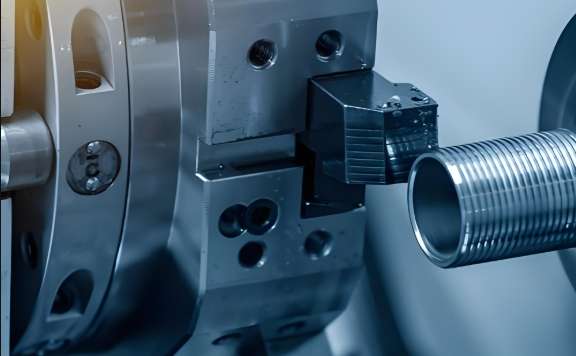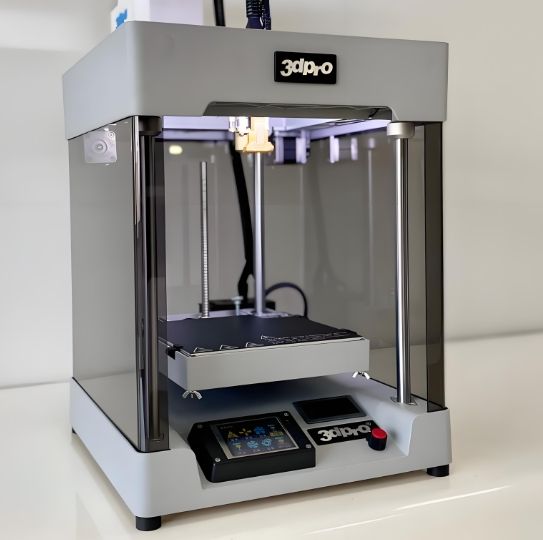
When the main shaft gear of a wind turbine needs to withstand twenty years of ocean wave impacts,CNC machining is the undisputed answer.However,when an orthopedic surgeon requires a titanium alloy implant tailored to a patient's bone structure,metal 3D printing reveals its unique value.This dialogue between manufacturing technologies is not about winning or losing;the key lies in understanding their respective languages.
Guardian of Metal Integrity
CNC machining is akin to an in-depth conversation with metal raw materials.Starting from solid aluminum ingots,steel billets,or titanium plates,the intrinsic shape of the material is gradually revealed through the precision dance of cutting tools.This subtractive manufacturing process preserves the original crystalline structure integrity of the metal.Ship propeller shafts endure impacts of thousands of tons in ocean waves,and aircraft landing gear repeatedly withstand landing vibrations—these scenarios demand that parts possess mechanical properties identical to those of the raw materials.The dense metal bodies created by CNC machining,like monolithic forged components,eliminate the potential risks associated with interlayer bonding,making them the preferred solution for heavy-load applications.
Inheritor of Micron-Level Precision
Precision is the genetic advantage of CNC machining.The motion accuracy of a five-axis machine tool can reach 1/20th the diameter of a human hair.This capability makes the machining of precision metal parts the cornerstone of high-end manufacturing.The spherical precision of medical artificial joints is controlled within 0.005 millimeters,equivalent to the diameter of a red blood cell,ensuring patients can walk pain-free for twenty years.The mirror-like finish of optical instrument bases ensures that laser paths are accurate to the millimeter.This innate precision allows automotive transmission gears to mesh silently without secondary processing.
Embracer of Large-Scale Manufacturing
When it comes to the demand for large metal parts,CNC machining demonstrates remarkable adaptability.A gantry machining center spanning six meters can integrally machine train wheel hubs,eliminating the risk of welding deformation.Heavy-duty lathes can produce the artistic curves of ship propellers.When the production volume exceeds the economic tipping point,the unit cost of CNC machining shows a graceful downward curve.The processing efficiency for a batch of 100 engine blocks can be 40%higher than that of the first piece.This predictable economies of scale is the hidden competitive edge in the mass production era.
Controller of Material Diversity
From lightweight magnesium alloys to hard-as-diamond tungsten carbides,from thermally conductive copper alloys to biocompatible titanium alloys,CNC machining operates across the entire spectrum of metal materials.Need a petroleum drill bit to withstand rock impacts?Cobalt-chromium alloy exhibits remarkable toughness under precision turning.Need a sterile surface for food machinery?316L stainless steel forms a natural antibacterial barrier after precision machining.This material versatility stems from the fundamental advantage of physical cutting—as long as the tool hardness exceeds that of the workpiece material,precise shaping is achievable.
The Shining Moment of Additive Manufacturing
3D printing shines uniquely in specific fields:when the internal structure of a part is like a honeycomb maze and traditional cutting tools cannot reach the complex cavities,metal additive manufacturing becomes the game-changer.When designers need to verify new concepts within 48 hours,rapid prototyping without tooling fixtures demonstrates astonishing efficiency.When facing difficult-to-machine materials like tungsten alloys,powder bed fusion technology opens up new pathways.The porous structure of medical implants promotes bone integration,and the topologically optimized components of aerospace vehicles achieve breakthroughs in lightweight design—these are the exclusive stages for 3D printing.

The Future Landscape of Technological Symbiosis
Smart manufacturing is giving rise to the integration of technologies:After a jet engine turbine is 3D-printed to form complex cooling channels,CNC precision machining ensures the accuracy of the sealing surfaces.Customized orthopedic implants obtain bio-porous structures through metal printing and are ultimately polished to perfect joint surfaces by a five-axis machine tool.This collaboration confirms the truth of modern manufacturing:the value of technology lies in precisely matching needs rather than in replacement.
The Decision-Maker's Three-Dimensional Guide
When facing process selection,it is recommended to consider three dimensions:
When the gearbox of a wind turbine needs to meet the demands of high strength,high precision,and mass production,the combined advantages of CNC machining become the inevitable choice.However,when a spacecraft fuel nozzle needs to integrate 50 parts into a single complex structure,metal 3D printing shines brightly.
From the critical valve bodies of deep-sea drilling platforms to the precision supports of space telescopes,behind those metal components crucial to major human engineering projects lies the reliable gene of CNC machining,which has been verified over half a century.It may not be as eye-catching as emerging technologies,but when the true power of metal,absolute precision,and economies of scale become the core demands,this classic process remains the cornerstone of modern industrial civilization.Meanwhile,as an innovative pioneer,3D printing is working together with CNC to draw the collaborative blueprint of advanced manufacturing—understanding how to let each technology play to its strengths is the true wisdom of manufacturing.